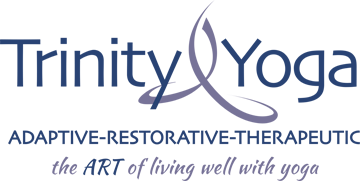Within a nationality we witness many different forms of expression, dialects, interests, etc. Similarly, the world of yoga offers many different styles, techniques and themes. Here, we offer a directory of the various styles of the physical practice of yoga.HATHA YOGA
This term means the practice of the physical postures, also called asanas, which could essentially mean all styles of physical yoga. Generally though, a Hatha class will be an eclectic blend of a few different styles often with a more gentle approach.
IYENGAR YOGA
If you are looking for detailed, therapeutic yoga or a very thoughtful and precise class this is the style for you. BKS Iyengar, the founder of this style, has been prolific and unwavering in his contribution to the world of yoga. Iyengar stands as one of the world’s most influential yogis.
All teachers of this style go through a rigorous certification process and are often very dedicated and devoted to this style. A class typically utilizes props in the form of blocks, straps, bolsters and blankets to assist students toward exploring the poses more fully with regard to their limitations or injuries. Classes are slow moving and poses are often held for much longer than in other styles of yoga.BIKRAM YOGA
This is the “hot†yoga you may have heard of, with studios designed to reach the heat of India, around 100 degrees Fahrenheit. Founder Bikram Choudhury developed this sequence of 26 postures to encourage the proper functioning of every body system. This style of yoga will make you sweat, which will cleanse and move toxins out of your body. Many proponents love the workout for the effects of weight loss and purification. Classes are often full and repetitive. Not recommended for anyone with heart problems, high blood pressure or during pregnancy.
KUNDALINI YOGA
A Kundalini yoga class is a dynamic practice incorporating breathing techniques, chanting, mantras (sacred sounds that empower the mind), and kriyas (action or ritual of energetics). Kundalini is an ancient form from the tantra yoga tradition; until 1969 or so, it was a closely guarded practice passed on only to select initiates. Yogi Bhajan is the North American resource and leader for this powerful form of yoga. He brought Kundalini to North America to help people to find their birthright, to be “happy, healthy and holyâ€Â, in order to reach their full potential. You won’t do many postures in a Kundalini class, but you will work very hard! You may encounter a more traditional looking yoga teacher often with a headdress and off-white clothing. The protocol for a Kundalini class is often more formal than some of the other styles, but it is well worth the experience and not as intimidating as it may initially appear.
VINYASA YOGA
Vinyasa comes from the Sanskrit “nyasa†(to place) and the prefix “vi†(in a special way), as in the arrangement of notes in a composition; the sequence of steps of a dance; or the linking of one posture (asana) to the next. In a yoga class you will experience this as a flowing sequence of specific asanas coordinated with the movement of the breath. The most common form of the Vinyasa approach in North America is the Ashtanga Vinyasa yoga of Pattabhi Jois.
Vinyasa is a method that assesses the needs of the individual or group and prescribes a complementary, step-by-step practice to meet those needs. If taught with sensitivity to the essence of vinyasa, it is a balanced and artful approach to practicing a series of postures.
